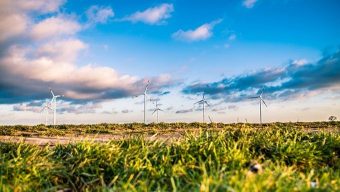
Danish wind giant DONG Energy has improved its earnings expectations for the year following a surge in profits in the three months to June 2017.
In its first financial results since reaching an agreement to sell its oil and gas business in May to INEOS, DONG reported a 74 per cent rise in operating profit over the second quarter of 2017 thanks to new offshore wind farms coming online and higher power output from its existing arrays.
DONG also raised its full-year earnings forecast from DKK15 – DKK17bn ($2.4bn-$2.7bn) to DKK17 – DKK19bn ($2.7bn – $3bn), on the expectation it will sell 50 per cent of the Borkum Riffgrund German offshore wind farm this year rather than next.
“H1 showed strong strategic progress supplemented by good financial and operating results,” chief executive Henrik Poulsen said in a statement. “Our offshore wind farms under construction are progressing according to plan. We are also continuing our efforts to expand our portfolio of offshore wind projects for construction after 2020.”
These include a bid for the development of the new Hornsea 2 project in the UK and a 12MW offshore wind demonstration plant off the coast of Virginia in the US, Poulsen added.
The sale of its oil and gas business is awaiting approval by UK, Norwegian and Danish authorities, and is expected be completed by the end of September.
Poulsen also hinted that thanks to a predicted “excess investment capacity” from around 2019 DONG may start expanding its investment activity in other types of renewable energy.
“Value-enhancing, green growth opportunities beyond the current investment plan will thus be explored against tight strategic and financial criteria,” he said. “This could naturally include additional opportunities within offshore wind – which remains our core focus – as well as other renewable technologies and within our downstream, customer-facing business. All of this supporting DONG Energy’s vision to play a leading role in the energy transformation.”
In other industry news, Innogy, SSE, and Statoil today unveiled the ownership breakdown of the planned 4.8GW offshore wind development at Dogger Bank in the North Sea.
SSE and Statoil will each own 50 per cent of three projects – Dogger Bank Creyke Beck A, Dogger Bank Creyke Beck B and Dogger Bank Teesside A – while the remaining project, Dogger Bank Teeside B, will be wholly owned by Innogy.
The energy giants are now responsible for taking the projects to financial close.
Meanwhile, Peterhead Port in Scotland has won a major contract to act as the hub for Vattenfall’s eleven-turbine European Offshore Wind Deployment Centre (EOWDC). Under the deal Peterhead will harbour one of the world’s largest floating cranes and the six barges responsible for transporting the foundations out to sea.
The Scottish government is keen to drive investment in the Scottish offshore wind industry. Earlier this month it invested a further £1.5m ($1.95m) into the Carbon Trust’s Offshore Wind Accelerator, which aims to accelerate the development of new technologies and drive the cost of offshore wind down.
Scotland has already invested £1.5m ($1.95m) in the project alongside major industry players such as DONG Energy and Vattenfall.
The latest updates further underline the progress being made by a sector that has seen the cost of new offshore wind projects fall by an estimated 40 per cent over the past four years.
The industry is widely tipped to confirm further sharp cost reductions later this autumn when the results of the government’s latest clean power contract auction are announced.
Source: businessgreen.com



